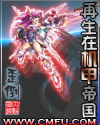再生之软件帝国-第5章
按键盘上方向键 ← 或 → 可快速上下翻页,按键盘上的 Enter 键可回到本书目录页,按键盘上方向键 ↑ 可回到本页顶部!
————未阅读完?加入书签已便下次继续阅读!
操作系统列表
早期操作系统(专利保护)
TRS…DOS,ROM OS’s
TI99…4
modore PET, 64, 和 VIC…20,
第一套IBM…PC
Apple
Sinclair Micro和QX等
非Unix商业操作系统
CPM操作系统
MP/M…80
UCSD P…system
Mini…FLEX
SSB…DOS
CP/M…86
DR…DOS
FreeDOS
MS…DOS
PC…DOS
Mach
Multics
OS…9
Unix及类似系统
UNIX
微软Xenix
Cromix
UNIflex
OS…9
IBM的AIX
BSD
FreeBSD
BSD
OpenBSD
Digital UNIX,即之后康柏Tru64
DNIX
HP的HP…UX
GNU/Hurd
SGI的IRIX
Linux(或称GNU/Linux)
MacOS X
OSF/1
SCO的SCO UNIX
Sun的SunOS,即之后的Solaris
System V
Ultrix
UniCOS
LindowsOS
OS/390
z/OS
Syllable
其他
Acorn
RiscOS
Arthur
Amiga
AmigaOS
Atari ST
TOS
MultiTOS
MiNT
苹果电脑(Apple/Macintosh)
Apple DOS
ProDOS
Mac OS
Mac OS X
Be
BeOS
BeIA
Digital/康柏(paq)
AIS
OS…8
RSTS/E
RSX…11
RT…11
TOPS…10
TOPS…20
VMS (后更名为OpenVMS)
IBM
OS/2
AIX
OS/400
OS/390
VM/CMS
DOS/VSE
OS/360
MFT
MVT
SVS
MVS
TPF
ALCS
z/OS
微软(Microsoft)
MS…DOS
Xenix
Windows 1。0
Windows 3。1
Windows 95
Windows 98
Windows ME
Windows Longhorn
Windows NT
Windows 3。5
Windows 4
Windows 2000
Windows XP
Windows Server 2003
Novell
Ware
NeXT
NeXTStep (即之后的Mac OS X)
Plan 9
Inferno
Prime puter
Primos
西门子
BS2000
个人电子助理(PDA)操作系统
Palm OS
Pocket PC
EPOC
Microsoft Windows CE
Operating systems timeline
来源:http://。encyclopedia4u。/
This article presents a timeline of events in the history of puter operating systems from 1960 to 2003。 For a narrative explaining the overall developments, see the related History of puting。
1961
CTSS
1964
OS/360 (announced)
1965
Multics (announced)
OS/360 (shipped)
Tape Operating System (TOS)
1966
MS/8
1967
CP/CMS
ITS
WAITS
1969
ACP (IBM)
TENEX
Unix
1970
DOS/BATCH 11 (PDP…11)
1971
/A>;
1972
MFT
MVT
RDOS
SVS
VM/CMS
1973
Alto OS
RSX…11D
RT…11
VME
1974
MVS (MVS/XA)
1976
/A>; TOPS…20
1978
Apple DOS 3。1 (first Apple OS)
TripOS
VMS
1979
Apple DOS 3。2
1980
Apple DOS 3。3
OS…9
QDOS
SOS
XDE (Tajo) (Xerox Development Environment)
Xenix
1981
MS…DOS
1982
SunOS (1。0)
Ultrix
1983
Lisa OS
Coherent
ProDOS
1984
Macintosh OS (System 1。0)
QNX
UniCOS
1985
AmigaOS
Atari TOS
MIPS OS
Microsoft Windows 1。0
1986
GS…OS
HP…UX
1987
Arthur
IRIX (3。0 is first SGI version)
Minix
/A>; (1。0) Microsoft Windows 2。0
1988
A/UX (Apple puter)
LynxOS
MVS/ESA
OS/400
1989
AIX
NeXTSTEP (1。0)
RISC OS
SCO Unix (release 3)
1990
BeOS (v1)
O/A>;
1991
Linux
1992
Solaris (2。0 is first not called SunOS)
Windows 3。1
1993
Plan 9
FreeBSD
BSD
Windows NT 3。1 (First version of NT)
1995
Digital Unix (aka Tru64 )
OpenBSD
OS/390
Windows 95
1997
Mac OS 7。6 (first officially…named Mac OS)
1998
Windows 98
1999
Mac OS 8
2000
AtheOS
Mac OS 9
Windows 2000
Windows ME
2001
Mac OS X
Windows XP
z/OS
2002
Syllable
2003
Windows Server 2003
External links
http://。levenez。/unix/ Timeline of UNIX history
操作系统简史(英文版)
1970 Development of UNIX operating system started。 It was later released as C source code to aid portability, and subsequently versions are obtainable for many different puters, including the IBM PC。 It and it’s clones (such as Linux) are still widely used on work and Inter servers。 Originally developed by Ken Thomson and Dennis Ritchie。
1975 Unix marketed (see 1970)。
1980 … October Development of MS…DOS/PC…DOS began。 Microsoft (known mainly for their programming languages) were missioned to write the Operating System for the PC, Digital Research failed to get the contract (there is much legend as to the real reason for this)。 DR’s Operating System, CP/M…86 was later shipped but it was actually easier to adapter programs to DOS rather than CP/M…86, and CP/M…86 cost 495。 As Microsoft didn’t have an operating system to sell they bought Seattle puter Product’s 86…DOS which had been written by Tim Paterson earlier that year (86…DOS was also know as Q…DOS, Quick &; Dirty Operating System, it was a more…or…less 16bit version of CP/M)。 The rights were actually bought in July 1981。 It is reputed that IBM found over 300 bugs in the code when they subjected the operating system and re…wrote much of the code。
Tim Paterson’s DOS 1。0 was 4000 lines of assembler。
1981 … August 12 MS…DOS 1。0。, PC…DOS 1。0。
Microsoft (known mainly for their programming languages) were missioned by IBM to write the operating system, they bought a program called 86…DOS from Tim Paterson which was loosely based on CP/M 80。 The final program from Microsoft was marketed by IBM as PC…DOS and by Microsoft as MS…DOS, collaboration on subsequent versions continued until version 5。0 in 1991。
pared to modern versions of DOS version 1 was very basic, the most notable difference was the presence of just 1 directory, the root directory, on each disk。 Subdirectories were not supported until version 2。0 (March, 1983)。
MS…DOS (and PC…DOS) was the main operating system for all IBM…PC patible puters until 1995 when Windows ’95 began to take over the market, and Microsoft turned its back on MS…DOS (leaving MS…DOS 6。22 from 1993 as the last version written … although the DOS Shell in Windows ’95 calls itself MS…DOS version 7。0, and has some improved features like long filename support)。 According to Microsoft, in 1994, MS…DOS was running on some 100 million puters world…wide。
1982 … March MS…DOS 1。25, PC…DOS 1。1
1983 … March MS…DOS 2。0, PC…DOS 2。0
Introduced with the IBM XT this version included a UNIX style hierarchical sub…directory structure, and altered the way in which programs could load and access files on the disk。
1983 … May MS…DOS 2。01
1983 … October PC…DOS 2。1 (for PC Jr)。 Like the PC Jr this was not a great success and quickly disappeared from the market。
1983 … October MS…DOS 2。11
1984 … August MS…DOS 3。0, PC…DOS 3。0
Released for the IBM AT, it supported larger hard disks as well as High Density (1。2 MB) 5&;frac14;‘ floppy disks。
1985 … March MS…DOS 3。1, PC…DOS 3。1
This was the first version of DOS to provide work support, and provides some new functions to handle working。
1985 … October Version 2。25 included support for foreign character sets, and was marketed in the Far East。
1985 … November Microsoft Windows Launched。 Not really widely used until version 3, released in 1990, Windows required DOS to run and so was not a plete operating system (until Windows ’95, released on August 21, 1995)。 It merely provided a G。U。I。 similar to that of the Macintosh。, in fact so similar that Apple tried to sue Microsoft for copying the ’look and feel’ of their operating system。 This court case was not dropped until August 1997。
1985 … December MS…DOS 3。2, PC…DOS 3。2
This version was the first to support 3&;frac12;‘ disks, although only the 720KB ones。 Version 3。2 remained the standard version until 1987 when version 3。3 was released with the IBM PS/2。
1987 Microsoft Windows 2 released。 It was more popular than the original version but it was nothing special mind you, Windows 3 (see 1990) was the first really useful version。
1987 … April MS…DOS 3。3, PC…DOS 3。3
Released with the IBM PS/2 this version included support for the High Density (1。44MB) 3&;frac12;‘ disks。 It also supported hard disk partitions, splitting a hard disk into 2 or more logical drives。
1987 … April OS/2 Launched by Microsoft and IBM。 A later enhancement, OS/2 Warp provided many of the 32…bit enhancements boasted by Windows ’95 … but several years earlier, yet the product failed to dominate the market in the way Windows ’95 did 8 year later。
1987 … October/November paq DOS (CPQ…DOS) v3。31 released to cope with disk partitions >;32MB。 Used by some other OEMs, but not distributed by Microsoft。
1988 … July/August? PC…DOS 4。0, MS…DOS 4。0
Version 3。4 … 4。x are confusing due to lack of correlation between IBM &; Microsoft and also the USA &; Europe。 Several ’Internal Use only’ versions were also produced。
This version reflected



